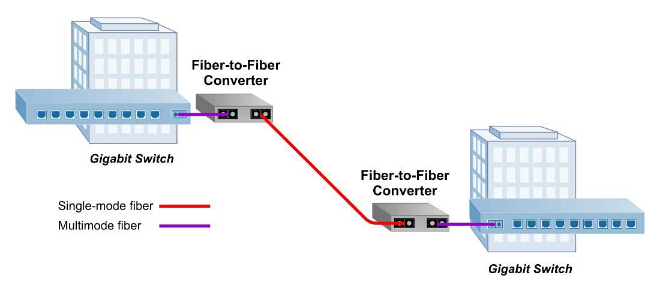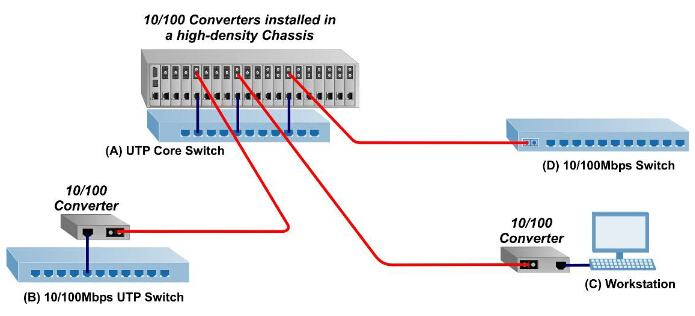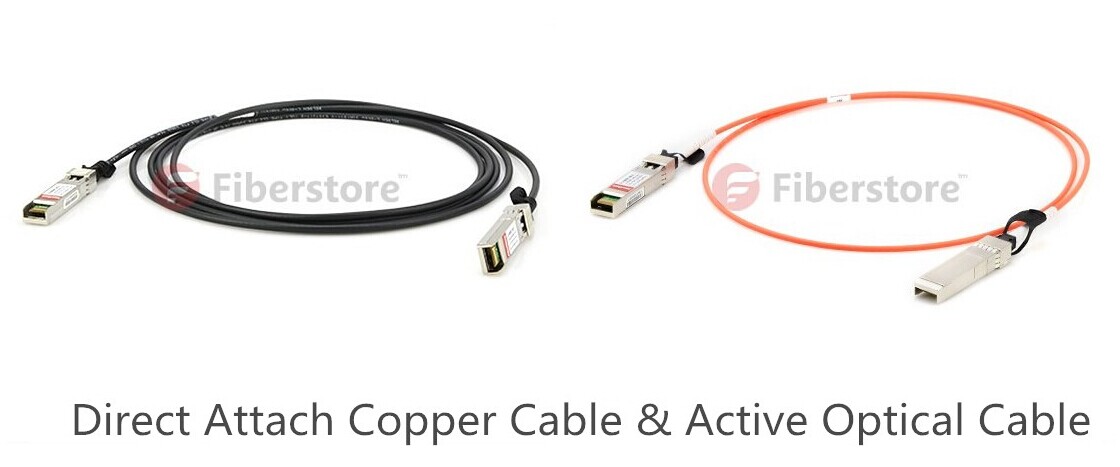Network complexity and the increasing number of devices on the network are driving higher bandwidth requirements and faster network speeds, as well as forcing longer distance requirements within the local area network (LAN). How to deal with these issues? Media converters present solutions to these issues by providing seamless integration of copper and fiber and different fiber types in enterprise LAN networks. Moreover, media converters can support various protocols, data transfer rates and media types to create a more reliable and cost-effective network. There are many different types of media converters, such as fiber media converters, PoE (Power-over-Ethernet) media converters, etc. This article will mainly introduce fiber media converter.
Fiber Media Converter Overview
A fiber media converter is a simple networking device that makes it possible to connect two dissimilar media types such as twisted pair with fiber optic cabling. Fiber media converters play an important role in interconnecting fiber optic cabling-based systems with existing copper-based, structured cabling systems. They can be divided into fiber-to-fiber media converters and copper-to-fiber media converters. For fiber-to-fiber conversion, the multimode fiber to single-mode fiber and a dual fiber link to single fiber can be converted by using bi-directional data flow, while for copper-to-fiber conversion, the electrical signals used in copper unshielded twisted pair (UTP) network cabling are converted into light waves used in fiber optic cabling.
Fiber-to-Fiber Media Converter
Fiber-to-fiber media converters are capable of connecting different fiber optic networks and supporting conversion from one wavelength to another. They can provide connectivity between single-mode and multimode fiber, as well as between dual fiber and single fiber. Normally, fiber-to-fiber media converters are protocol independent and available for Ethernet and TDM (time division multiplexing) applications.
As is shown in the following picture, a fiber-to-fiber media converter is able to extend a multimode network across single-mode fiber with transmission distance up to 140 km. In this application, two Gigabit Ethernet switches equipped with multimode fiber ports are connected by using a pair of Gigabit fiber-to-fiber media converters, which convert the multimode fiber to single-mode and enable the long distance connection between the switches.


Copper-to-Fiber Media Converter
Copper-to-fiber media converters integrate fiber into a copper infrastructure and make it possible to migrate a local network to fiber while extending the productive life of existing infrastructure. Moreover, they provide connectivity for Ethernet, Fast Ethernet, Gigabit and 10 Gigabit Ethernet devices. Also, they are able to perform 10/100, or 10/100/1000 rate switching and enable the integration of equipment with different data transfer rates and interface types into one seamless network.
As can be seen from the following diagram, 10/100 media converters are installed in a redundant power chassis for high-density fiber distribution from UTP switch equipment (A) at the network core. A UTP workgroup switch (B) is connected via fiber to the network core with a standalone 10/100 media converter. Another 10/100 converter enables fiber connectivity to PU UTP port in a fiber-to-desktop application (C). An Ethernet switch (D) is connected directly via fiber to the media converter module at the network core.

To sum up, fiber-to-fiber media converters are ideal solutions for the conversion between multimode and single-mode fibers and then increase the transmission distance. Copper-to-fiber media converters are simple and inexpensive solutions for matching copper ports to fiber infrastructure. Fiber media converters are flexible and cost-effective devices for implementing and optimizing fiber links in all types of networks. Fiberstore has various fiber media converters. It is an excellent choice for you.
Originally published at www.fiber-optic-components.com/


